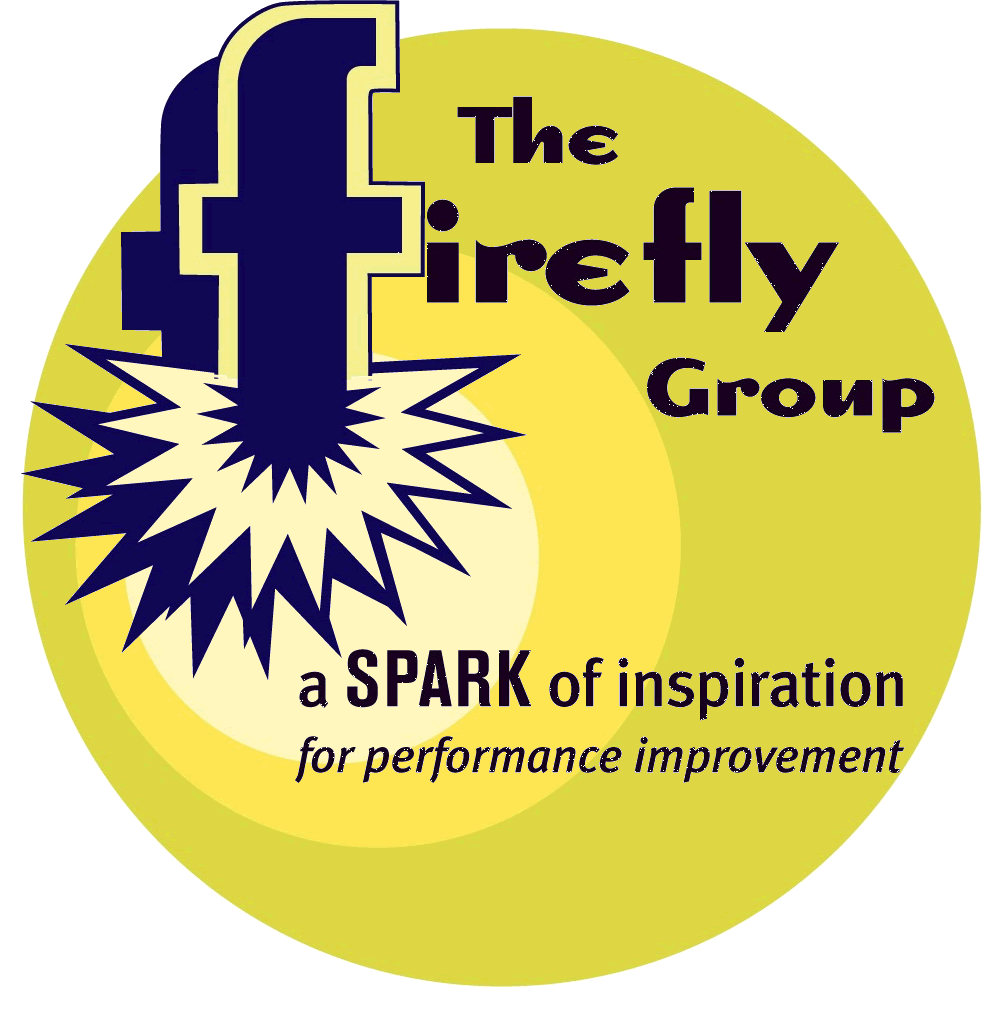


April 2010
In this Issue:
|
Say
It Quick |
Discoveries bits of serendipity to inspire and motivate |
Ideas fuel for your own continuous learning |
Activities tips and tricks you can try today |
| The Need to Talk | Talking Pictures | Visualize Learning | Picture This! |
As this 99-Word story suggests, being able to put a voice to thoughts and feelings has great benefit. The Discovery for this month offers some tools that can make talking easier for members of a team or in a meeting, even when people don't know each other well.
The Need to
Talk
I awoke excited, looking forward to the day's discoveries. But on the radio
I heard distressing news. As it rolled around in my head, I sank deeper into
the doldrums. By the time I arrived at the office my mood had become a mirror
of that bleak, rain-swept November Monday.
Then I spoke to a colleague about the story I'd heard. He listened, nodding, silent. Immediately I felt better, less burdened.
Saying something out loud, getting it off your chest and onto the table, can change the mood. By noon, the sun had come out.
 Talking
Pictures
Talking
Pictures
Looking for a way to boost brainstorming, deepen a discussion, expand upon
expectations, transform learning, or just share what's on your mind? It's
easy with the right image. And you can find plenty of images in a number of
different picture-based processing tools. This month's Discovery is a listing
of several styles of ready-made images or photos that can be used to spark
creativity or inspire dialogue among students, team members, or in meetings.
Listed here are several sources for high quality images that are easily used in a variety of situations. I like using all these products because the images in each can be used by trainers, facilitators, managers, and coaches who want to help people explore issues and ideas. No matter the situation, everyone is able to find a picture that suits their purpose. Plus, they are easily transported and stored.
There are several ways to use pictures to promote learning, enhance brainstorming, or foster interesting discussions. The most obvious is to spread pictures across a table or scatter them on the floor. Give your participants a reference point and ask them to find an image. By reference point, I mean a prompt for thinking that relates to the purpose for gathering people together. For example, in a visioning session, "What might our business environment look like in three years if current trends continue?" Or, at the beginning of a workshop you can ask, "What expectations do you have for this retreat?" For a teambuilding activity, "What are the most important characteristics of a team member?"
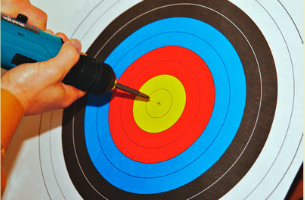 Invite
people to find one or more pictures that somehow represent or have a metaphorical
connection to the reference point. Give everyone a chance to share their pictures
and to talk about the significance they hold. For a rich discussion, encourage
others to add their insights onto those they have already heard. You can keep
notes on a flip chart or make a collage of the images along with a few words
that will help people recall their significance.
Invite
people to find one or more pictures that somehow represent or have a metaphorical
connection to the reference point. Give everyone a chance to share their pictures
and to talk about the significance they hold. For a rich discussion, encourage
others to add their insights onto those they have already heard. You can keep
notes on a flip chart or make a collage of the images along with a few words
that will help people recall their significance.
Using pictures, you'll notice more energy in your group as people's imaginations kick into gear. You'll also develop a shared language of images and ideas that take on a life of their own. It's not uncommon for certain images to grab the group's collective mind and become a sort of short hand to describe their situation. I invite you to try some of these sources of images, then what happens in your group as a result.
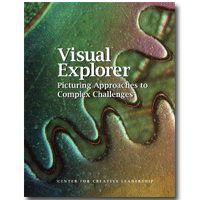 Visual
Explorer by the Center for Creative Leadership www.ccl.org/ve.
This is a deck of 224 large-format cards each with a high-quality photo image
designed to provoke reflection and conversation. They are printed on glossy
card stock (4 x 6 inches) and come in a metal box. Many of the images can
be viewed on line which presents some interesting possibilities for distance
or on-line learning! Sample images: A star-filled night sky, Dew on
a spider web, Hands molding clay on a potter's wheel, Man teaching a girl
to ride a bicycle, Hiker on the Great Wall of China. Cost: $395.
Visual
Explorer by the Center for Creative Leadership www.ccl.org/ve.
This is a deck of 224 large-format cards each with a high-quality photo image
designed to provoke reflection and conversation. They are printed on glossy
card stock (4 x 6 inches) and come in a metal box. Many of the images can
be viewed on line which presents some interesting possibilities for distance
or on-line learning! Sample images: A star-filled night sky, Dew on
a spider web, Hands molding clay on a potter's wheel, Man teaching a girl
to ride a bicycle, Hiker on the Great Wall of China. Cost: $395.
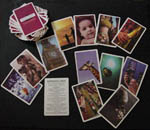 Expression
Cards
from the University of Oklahoma, www.ettq.ou.edu.
This deck of cards contains 52 color photos. Printed on glossy stock, they
are packaged in a cardboard box that fits in a pocket. Sample images:
Child's drawing of a family, Eifel Tower, Traffic at night, Snowcapped mountain,
Neon signs in Tokyo, Spanish dancer. Cost: $15.
Expression
Cards
from the University of Oklahoma, www.ettq.ou.edu.
This deck of cards contains 52 color photos. Printed on glossy stock, they
are packaged in a cardboard box that fits in a pocket. Sample images:
Child's drawing of a family, Eifel Tower, Traffic at night, Snowcapped mountain,
Neon signs in Tokyo, Spanish dancer. Cost: $15.
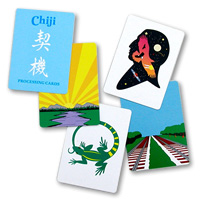 Chiji
Processing Cards
by the Institute for Experiential Education (phone 608.784.0789), http://wilderdom.com.
Chiji is a Chinese word meaning "important moment or opportunity." These computer-drawn
images come in a deck of 52 the size of playing cards. Instructions and suggestions
are included for Teachers, Camp Counselors, Recreation Program Leaders, Therapists,
Social Workers, and Environmental Educators but anyone - even you - can use
them with ease! Sample images: Dead tree in a desert, Flames of a fire,
Bottle with a message inside, Bank vault, Clown, Artist's easel, Ostrich with
its head in the sand. Cost: $15.99.
Chiji
Processing Cards
by the Institute for Experiential Education (phone 608.784.0789), http://wilderdom.com.
Chiji is a Chinese word meaning "important moment or opportunity." These computer-drawn
images come in a deck of 52 the size of playing cards. Instructions and suggestions
are included for Teachers, Camp Counselors, Recreation Program Leaders, Therapists,
Social Workers, and Environmental Educators but anyone - even you - can use
them with ease! Sample images: Dead tree in a desert, Flames of a fire,
Bottle with a message inside, Bank vault, Clown, Artist's easel, Ostrich with
its head in the sand. Cost: $15.99.
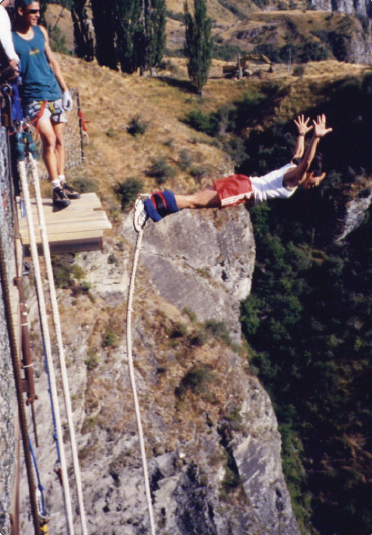
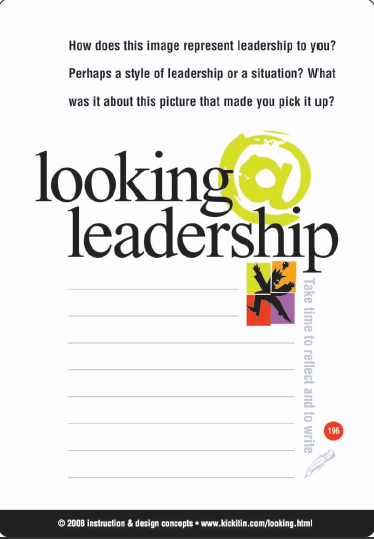 Looking
@ Leadership
Looking
@ Leadership
from Instruction & Design Concepts, www.kickitin.com/looking.html.
At five by seven inches, these color photo cards are terrific for large groups.
The images are easily seen from across the room. Initially designed to evoke
concepts related to leadership, I have found this stack of 200 photos to be
flexible enough to be used in any situation. The cards come with instructions
for set up, specific activities, and debriefing. Sample images: Pine
forest, Pride of lions, Field of tulips, Sign advertising "Free Manure," Rollercoaster,
Globe, Flock of sheep, White water kayaker, Compass, Trapeze artists. Cost:
$375.
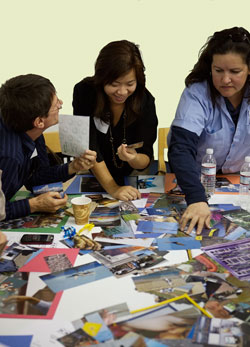 VisualsSpeak
by Image-Based Training and Consulting, www.VisualsSpeak.com.
This set of 200 photographs is printed on gloss-laminated paper and comes
in a variety of four sizes. The back side of each is color coded and labeled
so you can sort them into categories such as Life (activities, spirituality,
concepts), Things (household and personal, cities and structures), People
(children, adults, groups), or Nature (country, animals and birds, plants).
But, as with all images, I find that my participants are able to make their
own categories of meaning. VisualsSpeak comes with a 52-page User Manual,
vinyl envelopes to organize the images, and a zippered carrying case. Sample
Images: Whale, Fireworks, Totem pole, Graduation audience, Street crowd,
Mother and children swimming. Cost: $495.
VisualsSpeak
by Image-Based Training and Consulting, www.VisualsSpeak.com.
This set of 200 photographs is printed on gloss-laminated paper and comes
in a variety of four sizes. The back side of each is color coded and labeled
so you can sort them into categories such as Life (activities, spirituality,
concepts), Things (household and personal, cities and structures), People
(children, adults, groups), or Nature (country, animals and birds, plants).
But, as with all images, I find that my participants are able to make their
own categories of meaning. VisualsSpeak comes with a 52-page User Manual,
vinyl envelopes to organize the images, and a zippered carrying case. Sample
Images: Whale, Fireworks, Totem pole, Graduation audience, Street crowd,
Mother and children swimming. Cost: $495.
Other Sources: If you have more time than cash, you can also build your own set of images for use with groups. Collect post cards, greeting cards, calendar art, or magazine photos. Ask participants to each bring five photos from a magazine to your training and you won't have to do any preparation at all!
Visualize
Learning
Recently I was asked to lead a session for students of Marlboro College Graduate
Center. In their study of the most up to date technology for learning, they
wanted to know how to use interactive strategies. I gave them the opportunity
to experiment with a number of different methods to generate metaphors. We
used these metaphors to enhance their understanding of the learning they were
doing in their classes.
The group summarized some of what they learned about using interactive techniques that have a metaphorical quality. They found them helpful for examining subjective thoughts at a safer level. The metaphor acted like a bridge between ideas and allowed people the opportunity to step back and get some perspective. Metaphors also made it easier to move from concrete to abstract thinking.
Metaphors can be an especially powerful technique to enhance learning. But it's not always easy for people to come up with the right associative concept. This is one reason I like to use photos or pictures. When I, myself, am asked to think of a metaphor, I draw a blank. But with a stack of pictures to choose from, I don't have to "draw" anything! I can simply select the images that fit my thinking.
This seems to work for the participants in my workshops too. The observations people make are always surprisingly relevant to our topic of discussion. I encourage you to try using them too, then the results!
 Picture
This!
Picture
This!
Now it's your turn to use visual images to make metaphorical connections and
meaningful conversations - and you can try it right now! Take a moment to
think about a personal experience when someone acted as a positive leader.
This would be a time when you thought someone performed extremely well in
their role. Recall that incident as vividly as you can. Then do the same for
a time you experienced very poor leadership. For both instances, what made
them such extreme examples?
When you have clarified your thoughts, click on the large purple question mark to reveal five pictures from the Looking@Leadership Card Deck created by Fran Kick. (Used with permission.) As you review the pictures, choose one for each of your leadership situations, positive and negative. Try to make connections that symbolize your emotional and intellectual experience.
Once you have some ideas, click the "back button" on your browser and click to send me a few thoughts via email. I'll print your ideas in a future issue of the Firefly News Flash!
Have fun and thanks in advance for playing with this concept!
Read previous
issues. Click Archives!
To add or delete your name to our mailing list, email
with a short note in the subject line.
We want this newsletter to be practical, succinct, and thoughtful. If you have suggestions about how we can meet these criteria, please let us know! Send us an with your thoughts and ideas.
Home
| Services
| Products
| Mission
| Ideas |
The Group
| The Buzz
(c)
2005 The Firefly Group